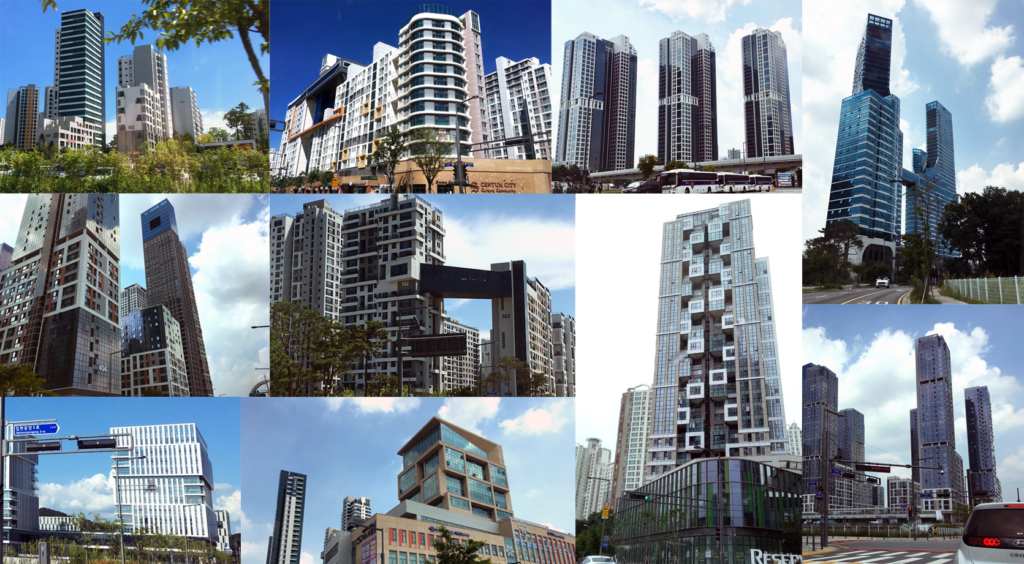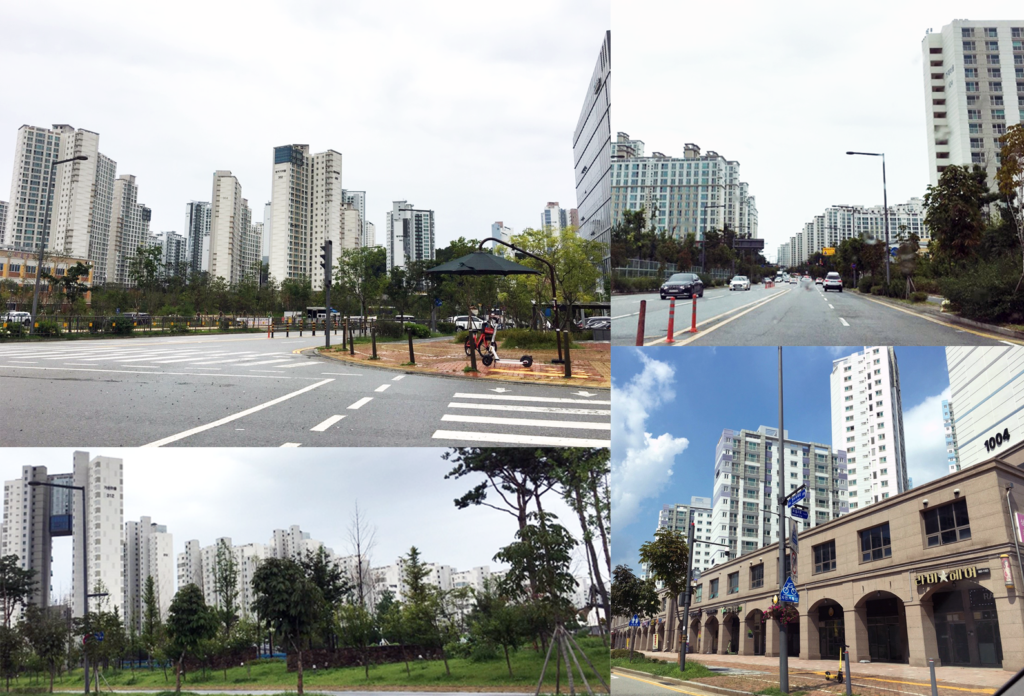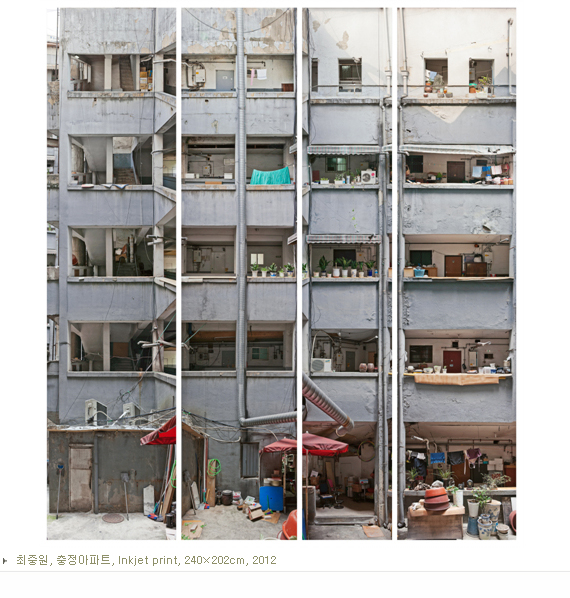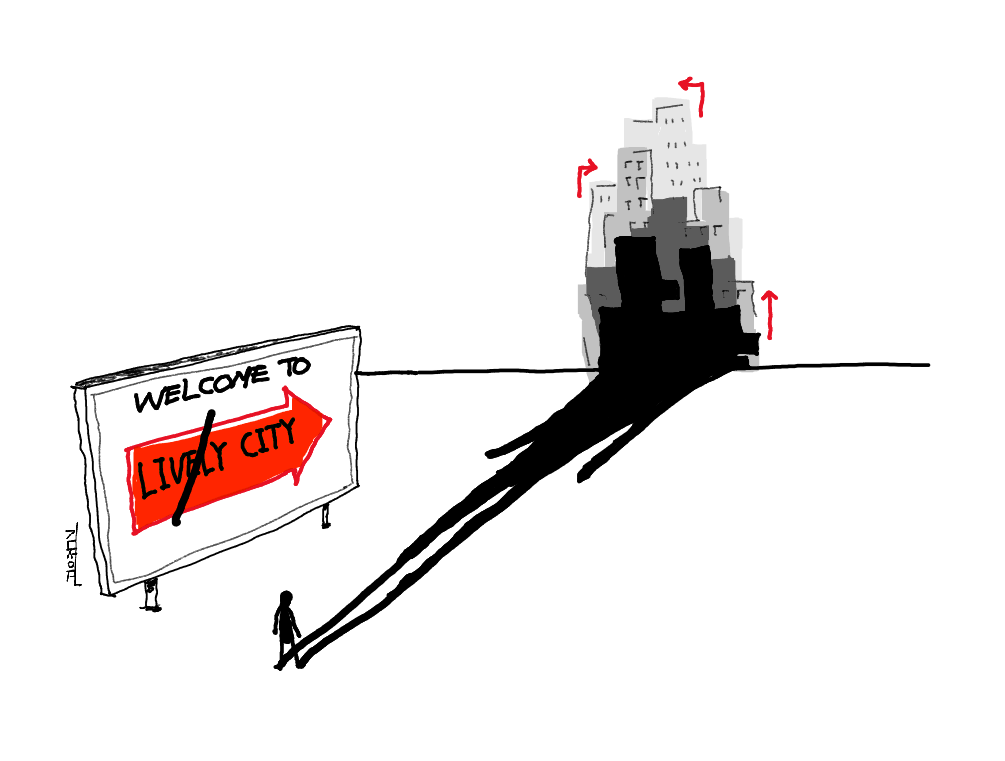
Sejong city, as the administrative capital of South Korea, was founded in 2007 to help with decongestion in the national governance and economics focused on the current capital, Seoul. Sejong city has also been credited with “ambitious” architectural designs for both residential and government buildings.
As seen from the picture, building designs in Sejong remind me of the “LEGOfied” architectural styles from various city building games. What characterize the architectural landscape of Sejong are the arrays of residential, commercial, and government buildings with muted colors, mixed façade materials, sleek grid pattern of windows, and their overall boxy building shapes. Every building looks different with some unique specificities. However, the only reason those attributes stand out is due to that the rest of the buildings are exactly what you would expect.

Not only do the building designs look coherent and organized, but also streets appear to be cleaner without bold signages and public trash cans. The city generally gives a cold and distant impression from the layered and opaque building façades devoid of any disorganized scenes of quotidian practices. The everyday life on the streets and aura of the places in Sejong seem to be shaped and staged by these over-designed examples of architecture.

The city that appears “too perfect” from the outside made me long for the unofficial and disorganized small alleys and older small-scale apartments which used to be under-designed but more flexible and adaptable to environmental changes. The architectural landscape of Sejong seems to elude a sense of uncanny emptiness to pedestrians.

Jeongwon Gim (University of Alberta)
